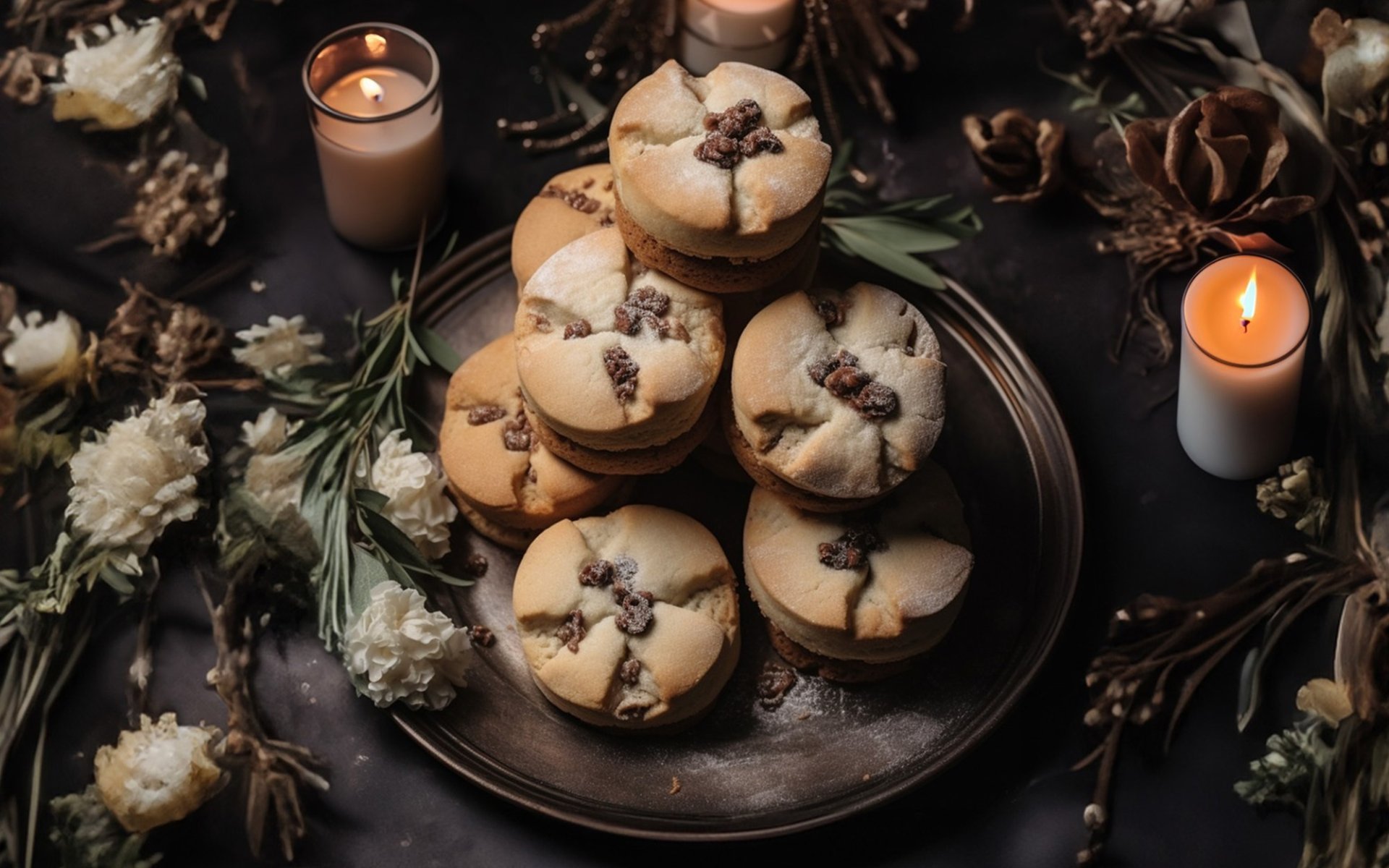Soul Cake

Halloween is a festival brimming with fascinating traditions and history. Every year, people worldwide eagerly anticipate celebrating by dressing up as ghosts and ghouls, decorating homes or restaurants with spooky themes, and preparing a variety of sweets for Trick or Treat. However, in the past, this activity didn't involve handing out candies or other confections; instead, it was the giving of a pastry called Soul Cake.
Soul Cake: A Sweet for Departed Souls
Soul Cake, also known as Soulmass Cake, is a small, round pastry with a texture similar to a biscuit. Traditionally, this cake was made for All Souls' Day and All Saints' Day by Christians in medieval Europe, holidays celebrated on November 1st and 2nd to honor and remember departed souls.
During these festivities, villagers would bake large quantities of Soul Cakes to give to children and the less fortunate who came to their homes asking for treats. It was believed that the more cakes one gave, the more blessings the ancestors of the donor would receive. For this reason, Soul Cakes earned the name cakes of the souls.
From "Souling" to Modern "Trick or Treat"
Today, the concept of asking for Soul Cakes has evolved into the Trick or Treat activity we know on Halloween, where children in costumes go from house to house asking for sweets. This transformation occurred in the United States during the early 20th century and became a central part of modern Halloween celebrations.
However, in ancient times, Halloween, observed on October 31st, originated from the Samhain tradition of the Celts, an indigenous group from Ireland. This tradition existed for over 2000 years before Christ, preceding All Souls' Day and All Saints' Day in the Middle Ages. Over time, these various traditions merged into the Halloween festival, with Trick or Treat becoming one of its main activities.
Soul Cakes Today: Enduring Cultural Value
Although many people today have switched from Soul Cakes to other types of sweets to give to children on Halloween, in some cultures, Soul Cakes remain a popular treat. They have evolved into various forms and flavors, typically containing spices like nutmeg and cinnamon, as well as dried fruits. Many chefs also decorate them with diverse Halloween themes to appeal to children.


